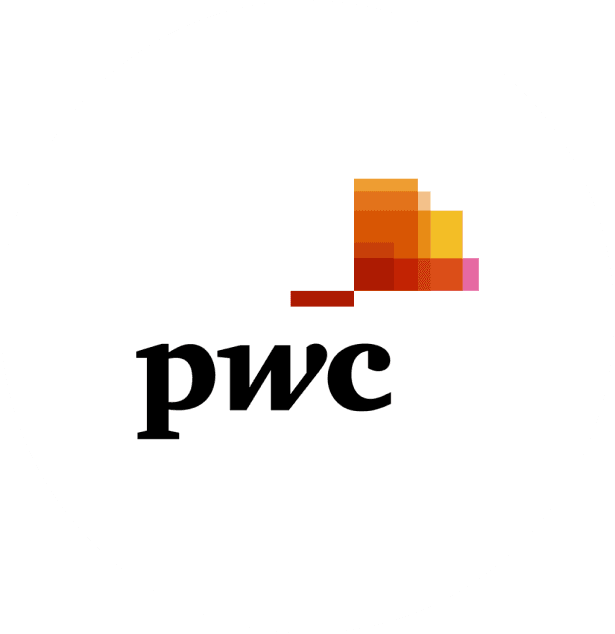
Maximize value from climate reporting
 PwC UK
PwC UK WBCSD Climate Masterclass Series
WBCSD Climate Masterclass SeriesSummary
Transform climate reporting from a compliance exercise to a strategic advantage by turning reporting into a tool for sustainable growth and societal impact.
Context
Following a WBCSD and PwC UK masterclass on maximizing value from climate reporting, this document summarizes the key learnings that were presented and surfaced via rich discussion among company participants under the Chatham House rule.
In today's corporate landscape, climate reporting is frequently perceived as a burdensome obligation, undertaken for compliance with regulatory standards. However, this perspective often means ignoring the substantial potential for climate reporting to be a powerful driver of value creation.
At the same time, following the conclusion of COP28, the need for accountability and progress tracking to bridge the gap between ambition and action was highlighted.
Therefore, Organizations need to understand how to leverage data for internal buy-in and driving decarbonization and streamline reporting efficiency. This opens the opportunity to extract value from climate reporting to shift mindsets from viewing climate reporting as a regulatory chore to recognizing it as a dynamic tool for sustainable growth and positive societal impact.
Current reporting landscape & key challenges
The reporting landscape is complex and constantly evolving. There are attempts at standardization and coordination in climate reporting standards across key jurisdictions. However, key differences remain. Set out below is an overview of the global climate reporting landscape (correct at time of publication: December 2023)
Figure 1: Reporting Landscape correct at time of publication: December 2023 (PwC UK)

Source: PwC UK
The short timeframes for reporting present a challenge, especially for many organizations that are often also facing pressures around: quickly responding to new regulations, data availability, quality, visibility, capacity and data governance. This pressure emphasizes the urgency of streamlining reporting processes while ensuring accuracy and relevance.
Additionally, the dynamic nature of the reporting landscape and the complexities of disclosures are expected to escalate over the next two years. However, a profound shift is underway, with regulation pushing organizations along the spectrum (see figure 2) towards more integrated reporting practices and interoperability. This shift is not merely compliance-driven, but a strategic integration of sustainability with the strategy of an organization.
These evolving regulatory demands mean that many organizations now strive to integrate financial and non-financial data. This shift is being driven by regulators, consumers, and stakeholders, creating both reputational benefits and a market "license to operate" - when done well. The accompanying map depicts the current climate reporting journey organizations are going through:
Figure 2: Current climate reporting journey for many organizations (PwC UK)

Source: PwC UK
This chart provides a visual representation of the five different stages of climate program development showing increasing reporting maturity level. Organizations should aim to, and through regulation are being forced to, move further to the right of the chart to unlock value.
Solution
Create value from climate reporting through the following value buckets
Assess Climate Strategy and Progress by Benchmarking Internally
Leveraging Sustainability Performance Data to Uncover Market Opportunities and Drive Innovation
Cross-Functional Climate Risk Mitigation and Scenario Analysis for Organizational Resilience
Enhancing Stakeholder Trust Through Collaborative and Transparent Reporting
1. Use benchmarked carbon performance to guide strategic decision-making in products and operations
The emphasis on value creation through reporting necessitates seizing opportunities such as cost reduction, carbon reduction, and innovation of products, enabled by reporting.
A key value-creative opportunity lies in taking innovative approaches to product development, aiming to align offerings with sustainability goals. This involves not only reducing carbon emissions through conventional means but also developing products to be more appealing, efficient, and environmentally friendly to different types of people or in a different way.
Transition planning therefore becomes a strategic exercise, incorporating problem-solving and analysis to align financial and non-financial data for products. Organizations are urged to rethink their data collection strategies and frameworks, leveraging technology to enhance efficiency.
The below graph visualizes a sales forecast spanning 5-10 years with a progressive decline in the targeted KPI for carbon emissions.
Figure 3: Illustrative forecast product mix to optimize value in transition scenarios (PwC UK)

Source: PwC UK
To forecast product mix, organizations should:
Map products and forecast sales over the next 10 years
Calculate current product emissions and forecast product emission reduction goals.
Assess the gap between emissions of forecast sales with product emission goals
Factor in product emissions reduction levers or consider if new lower emission products may be required in the next 10 years to reach emission targets.
2. Maximize market engagement and unlock market opportunities by enabling your business to speak to sustainability in a customer friendly way
The role of procurement teams in advancing Environment, Social, and Governance (ESG) goals is growing, as they interact with customers who demand more transparency and accountability, and as they face new regulatory standards that require suppliers to demonstrate their carbon reduction plans.To enhance the resilience of supply chains, organizations also need to measure and manage the carbon footprint of their suppliers. This requires data collection and analysis, as well as collaboration and innovation with the supply chain partners. This is especially crucial for organizations that operate in regulated markets or that have limited supplier options. By working collaboratively, this can create value and reduce risks for both them and stakeholders.
The image below visualizes the data and support that can be given to commercial teams from initial reporting requirements to generate value.
Figure 4: Illustrative interlink between reporting requirements and commercial teams (PwC UK)

Source: PwC UK
3. Protect your organization from value erosion by engaging cross-functionally on changes in climate performance and exposure
It’s important to engage with teams across the organization when thinking about risk, scenario modeling, and transition planning to derive the greatest value from reporting and avoid risk when taking opportunities.
Considerations surrounding finance hold significant implications through capital allocation directed towards transition planning, climate risk mitigation, and decarbonization initiatives. From a compliance perspective, the integration of these factors into the organization's risk management approach requires the collaboration and engagement of the risk management team, finance functions, and procurement teams.
For example, given the pivotal role of the Board and the Audit Committee, it is imperative for these governing bodies to comprehend and embrace their responsibilities in relation to these evolving dynamics. A proactive approach entails not only acknowledging their roles but also aligning with the imperative of fortifying the organization's resilience for the future. Insights from a recent CEO survey underscore the urgency, revealing that 45% of global CEOs believed their companies would no longer be viable in ten years’ time if they continued their current path (1). In this light, it becomes evident that a comprehensive understanding and commitment to navigating the challenges posed by carbon-related transitions are indispensable for organizational sustainability and success.
The below image highlights some of the interlinking teams that can derive value from accessing and harnessing climate reporting data.
Figure 5: Cross-functional teams (PwC UK)

Source: PwC UK
Exemplary ways to engage cross-functionally on changes in climate performance and exposure:
Communicate risk and what it means via:
Annual climate exposure seminars
Carbon performance updates
Carbon KPIs embedded into Business-as-Usual processes e.g.
Product mix revenue targets
Emissions, activity or consumption targets
% of suppliers with net zero targets
Build program / change management around reporting data and process:
Single management and reporting data feed
Maintain reporting/business alignment
Drive initiatives that align with climate targets
4. Build trust with stakeholders through collaborations required by climate reporting needs
The challenge lies not only in the technical aspects but also in securing stakeholder buy-in at a senior level, emphasizing the need for a cultural shift towards value-driven reporting. Engaging stakeholders extends beyond the traditional boundaries, encompassing current employees, suppliers, investors, and customers. The workforce, in particular, plays a dual role as a stakeholder and a source of innovative ideas for decarbonization. The image below highlights different stakeholders' reporting needs and how collaboration can be leveraged to develop a ‘win-win' result for both.
Figure 6: Illustrative stakeholder collaboration scenarios (PwC UK)

Source: PwC UK
Procurement teams are increasingly seeking sustainability information due to evolving procurement requirements, creating both challenges and opportunities for organizations. Therefore, supplier engagement becomes a pivotal component of organizational resilience planning. Understanding and mitigating the carbon footprint of the supply chain is imperative, requiring collaboration and data sharing. While challenges exist, such as reliance on estimates and proxy data, organizations are encouraged to collaborate with suppliers, recognizing the importance of collective efforts in achieving sustainability goals.
Investors, especially pension funds, seek a long-term perspective on climate risks, making robust risk data crucial for building and maintaining trust. Board-level reporting and remuneration tied to climate reporting elevate the conversation, ensuring strategic alignment and ownership at the highest organizational level. The narrative shift is not only about compliance but also about resilience, sustainability, and long-term viability.
Boards are increasingly considering the impact of the narrative around decarbonization on share prices. Share price increases are being linked to the ability of organizations to change the external narrative, aligning with broader value conversations with investors and stakeholders. This highlights how changing the narrative about value creation, even in specific areas, holds transformative potential for organizations
Usage
One example of an organization effectively maximizing value from climate reporting is Signify. Signify, spun off from Royal Philips in 2016, is deeply committed to sustainability, aligning its operations with the UN Sustainable Development Goals and the Paris Agreement through its Brighter Lives, Better World 2025 initiative. This program integrates sustainability into the company's core, enhancing corporate value and ensuring compliance with mandatory reporting standards. Signify leverages climate reporting to embed sustainability into its operations and offerings, using annual reports to communicate environmental strategies and stakeholder engagement, thus bolstering its brand and creating long-term value.
The company has developed low-carbon products and services, gaining a competitive advantage and tapping into new markets by tracking 'Circular revenues' and 'Brighter Lives revenues,' which reflect some of their sustainability and societal contributions. Adhering to the Task Force on Climate-related Financial Disclosures (TCFD) and the EU Directive on non-financial information, Signify has standardized its reporting, increasing transparency and earning stakeholder trust.
Sustainability oversight is institutionalized within Signify's governance, with the Supervisory Board and Audit Committee ensuring accountability. Signify's robust reporting demonstrates its dedication to sustainable growth, reinforcing its reputation as a responsible leader in the lighting industry. For more details, visit Signify's 2023 Annual Report
Impact
Climate impact
Targeted emissions sources
Applicable to all scopes (1-3).
Decarbonization impact
The decarbonization impact is relative to each organization’s footprint and the levers selected to reach decarbonization goals. The methods outlined in this article offer the necessary steps to gain insights and enhance the likelihood of successful implementation.
Business impact
Benefits
Use sustainability performance data to identify market opportunities and differentiate approaches. This can lead to a reduction in cost of capital, enhanced reputation, and innovation in relation to products and services previously unexplored or inaccessible
Enhanced risk mitigation by looking cross-functionally at climate risk and using scenario analysis to ensure resilience and fitness of products and supply chains.
Increased trust with stakeholders, cross-sector and cross-tier collaborations with peers, suppliers and other key stakeholders, both internal and external.
This investment of time and resources improves visibility and direction to make better informed decisions toward emissions reduction and cost-saving-saving initiatives.
These emissions reductions have the potential to save costs arising from risks such as: carbon taxes, changing consumer preferences for low-carbon alternatives, and loss of competitiveness deriving from missed value creation opportunities.
Maximizing value from carbon reporting can deliver:
Increased streamline reporting efficiency
Commercial growth through access to emerging markets for low-carbon products and services
Increased investor interest surrounding low-carbon businesses
Operational efficiencies which can generate cost savings as well as reducing emissions
Enhanced employee retention due to an alignment between organizational and personal values
Improved brand recognition by resonating with the needs of the wider public
Costs
Developing value from reporting requires an investment of time and resources into data gathering, upskilling, and analyses across the business.
However, the cost of maximizing value from climate reporting is subject to specific organization requirements, such as external tool usage for analysis, company size, existing infrastructure, upskilling needs, emission reduction goals, and geographical locations.
The benefits of maximizing climate reporting depend on decisions informed by analyses and methodologies within this article, which rely on the organization’s use of high quality inputs (data points) and effective interpretation and implementation of results. Some value buckets require investment, and organizations must conduct independent research into potential product mixes, scenario analyses, and financing options for informed decision making. The return on investment will ultimately depend on all the outlined factors.
Impact beyond climate and business
Co-benefits
Climate reporting enhances transparency on social aspects such as diversity, fair labor practices, and community involvement, contributing to improved social equity and justice.
By addressing climate risks and implementing sustainable practices, organizations support community resilience to environmental challenges, natural disasters, and social disruptions.
Climate reporting encourages sustainable resource management and biodiversity conservation, promoting healthier ecosystems and habitats for wildlife.
Sustainable practices driven by climate reporting can lead to cleaner air, water, and environments, benefiting public health and well-being in communities.
Compliance with reporting standards aligns businesses with global sustainability goals (e.g. UN SDGs), fostering partnerships and actions that promote social, environmental, and economic progress worldwide.
Implementation
Challenges and key success factors when creating value from reporting:
Figure 7: Key challenges to creating value from reporting and solutions (PwC UK)

Fostering a connection between climate and value: When fostering a connection between climate and value, the focus is on simplifying processes for clarity. Recent experiences with organizations managing an excess of 350 key performance indicators (KPIs) highlight the risk of diluting both value and transparency in reporting making it difficult to use for value creation purposes. The recommendation is to identify and streamline essential KPIs aligned with strategic goals and mandatory reporting, ensuring a unified, singular version of accurate information.
Data accuracy and reliability: Organizations should ensure they implement controls to present thoroughly reviewed, high-quality data. Mandatory assurance provisions, as seen in CSRD, contribute to elevating data to an independently verified level, reinforcing transparency. Recognizing the delicate balance in transparency, there is an acknowledgment of the importance of disclosing challenges transparently. Effective communication with the communications and board teams is crucial to conveying accurate yet potentially uncomfortable information, fostering a more genuine and balanced reporting narrative.
Reporting standardization: Industry standards and collaboration within sectors also becomes crucial for overcoming challenges. Cross-industry collaboration offers support and insights, enabling organizations to navigate complex reporting landscapes more effectively. This collaborative approach extends beyond mere compliance, fostering a community-driven effort toward sustainable practices.
Avoiding acting in silos: Siloed reporting challenges are mitigated by establishing cross-functional working groups, emphasizing the need for ownership across the organization. Having a board sponsor is crucial for driving strategic alignment, emphasizing the importance of top-level support.
Read more
Considerations for the APAC Region
The recent 2023 PwC research, Sustainability Counts II highlights a significant trend among companies in the Asia-Pacific (APAC) region, particularly those listed on various stock exchanges, in enhancing their disclosure of climate-related targets. The data from 2021 to 2022 indicates a 29% increase in such disclosures. This uptick is a clear indication of the growing importance placed on sustainability within the corporate sector of the APAC region. The climate-related targets that are frequently mentioned by these companies encompass a range of initiatives, including:
Adoption of 100% Renewable Energy
Reduction in Energy Use
Green Investment; and
The development of Low-Carbon Products
Furthermore, the study reveals that 89% of the companies examined have conducted climate scenario analysis. The report also sheds light on insights from Chief Sustainability Officers (CSOs) who emphasize the importance of integrating climate reporting with overall business strategy. The same report shows an overall increase in companies using sustainability standards in APAC:
Figure 8: Overview of sustainability reporting standards and frameworks used in APAC

This integration is not just about meeting compliance requirements but is increasingly about linking sustainability efforts to tangible business performance and outcomes.
Disclaimer
While we have made every attempt to ensure that the information contained in this Site has been obtained from reliable sources, PricewaterhouseCoopers LLP is not responsible for any errors or omissions, or for the results obtained from the use of this information. All information in this Site is provided "as is", with no guarantee of completeness, accuracy, timeliness or of the results obtained from the use of this information, and without warranty of any kind, express or implied, including, but not limited to warranties of performance, merchantability and fitness for a particular purpose. Nothing herein shall to any extent substitute for the independent investigations and the sound technical and business judgment of the reader. In no event will PricewaterhouseCoopers LLP, or its partners, employees or agents, be liable to you or anyone else for any decision made or action taken in reliance on the information in this Site or for any consequential, special or similar damages, even if advised of the possibility of such damages.